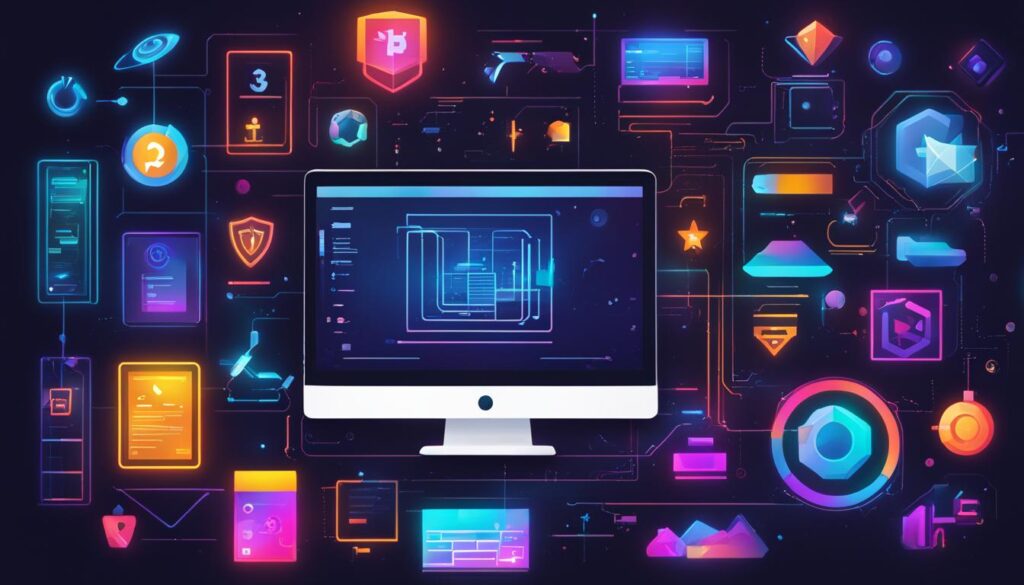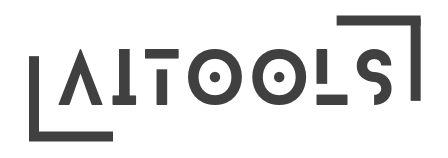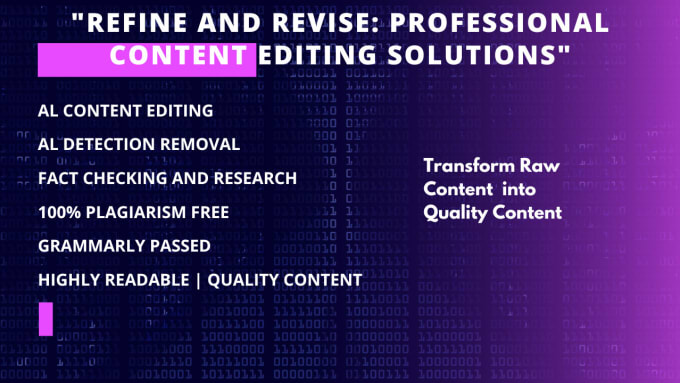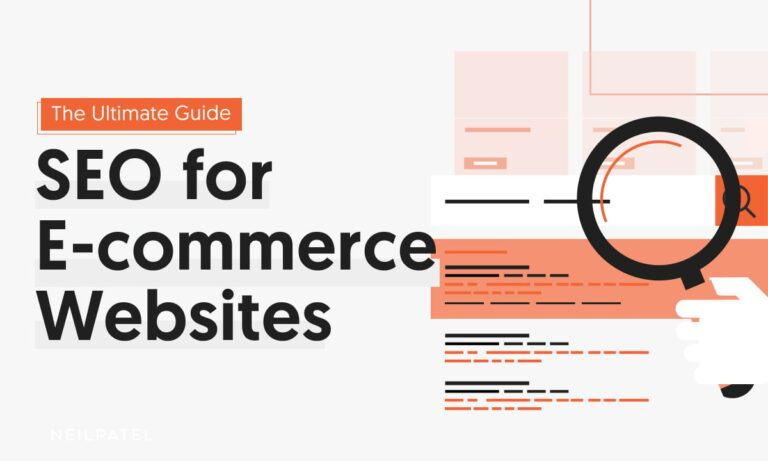Beginner’s Guide: How to Build a Web3 Website Step-by-Step
Welcome to our beginner’s guide on how to build a Web3 website! Whether you are new to Web3 or have some experience, this guide will provide you with the essential knowledge and tips to create an efficient and user-friendly Web3 site. In this comprehensive guide, we will walk you through the step-by-step process of building a Web3 website, from understanding Web3 and its benefits to planning, designing, and implementing Web3 functionality. By the end of this guide, you will have the skills and knowledge to create a modern website that harnesses the power of blockchain and decentralized features.
Key Takeaways:
- Building a Web3 website requires careful planning and consideration of your goals and target audience.
- Choosing the right development tools and setting up your development environment are essential for a smooth workflow.
- Design and user experience are crucial factors in creating a successful Web3 website.
- Integrating Web3 functionality and ensuring website security are important steps in the development process.
- Thorough testing and debugging, as well as optimization for deployment, are necessary for a high-quality website.
Understanding Web3 and Its Benefits
Before you begin designing and building your Web3 website, it’s crucial to understand the fundamental concepts and benefits of Web3.
What is Web3?
Web3 is the next generation of the internet, powered by decentralized technologies such as blockchain networks and smart contracts. Unlike Web 2.0, which is dominated by centralized entities that control user data and applications, Web3 is decentralized and gives power back to users through peer-to-peer interactions and secure, trustless transactions.
Benefits of Web3 Website Design
Web3 technology offers several benefits for website design and development:
- Increased transparency and security through decentralized protocols
- Greater user control over personal data and privacy
- Improved speed and performance through distributed computing
- Seamless integration with blockchain-based services and applications
By incorporating Web3 technologies into your website design, you can create a more secure, efficient, and user-friendly website that offers unique functionalities and experiences for your audience.
Web3 Website Tips
“A successful Web3 website design requires a balance of form and function.”
When designing your Web3 website, it’s important to keep in mind both the visual appeal and functionality of your site. Here are some Web3 website tips to keep in mind:
- Choose a clean and organized layout that makes navigation easy for users.
- Use color schemes and typography that are consistent with your brand but also visually pleasing to your audience.
- Include clear and concise messaging that communicates the unique value of your Web3 website to users.
- Ensure that your website is optimized for mobile devices and has fast loading times.
By following these tips, you can create a Web3 website that stands out from the competition and provides a seamless user experience.
Planning Your Web3 Website
Building a Web3 site requires careful planning to ensure a successful project. Before diving into the technical aspects, define your goals and objectives for the website. Think about your target audience and what they expect from your website. Content, design, and functionality should all center around your users.
Once you have a clear vision of what you want to achieve, start outlining the features and functionalities you want to incorporate on the website. For instance, you may want to include a decentralized identity system for secure login, payment integrations, and smart contract functionalities.
Another important factor is deciding on the right development team or partner for your Web3 website project. Consider partnering with a development agency experienced in building Web3 sites. They can provide valuable insights into the latest trends and best practices in Web3 website development.
After having a clear plan for your Web3 website, it’s essential to lay out a development roadmap to keep your project on track. A roadmap should include a timeline, milestones, and deliverables for each stage of the project. Additionally, you may want to consider using agile methodologies, such as Scrum or Kanban, to ensure flexibility and responsiveness to changes throughout the development process.
Proper planning is essential for building a successful Web3 site. By putting in the time and effort to plan your website’s design, features, and functionalities, you set a strong foundation for the development process, ensuring that your website meets your objectives and exceeds your users’ expectations.
Choosing the Right Web3 Development Tools
As you embark on your Web3 website setup journey, it’s essential to choose the right development tools. The ideal tools will help you build a functional and secure website while making the development process more manageable.
Different Types of Web3 Development Tools
There are various types of Web3 development tools available, each with its unique set of features and capabilities. Some of the most popular tools include:
- Web3.js
- Solidity
- Metamask
- Remix
- Truffle
- Ganache
Each of these tools has different functions and is suited for specific tasks. You need to choose the tools that best align with your project’s requirements and your expertise as a developer.
How to Choose the Right Web3 Development Tools
Choosing the right Web3 development tools can be a daunting task, especially if you’re new to Web3 development.
The first consideration when choosing the right tools for your Web3 website setup is your project’s requirements. You need to identify the features and functionalities you want to incorporate into your website and choose the appropriate tools for the job.
Another important factor to consider is your level of expertise in Web3 development. Some tools may be more complex than others, so you need to pick the ones that align with your programming skills and experience.
Lastly, you need to consider the community support for the tools you choose. Look for tools with active and supportive communities that can help you troubleshoot any issues you encounter during development.
By carefully considering these factors, you can choose the right Web3 development tools that align with your project’s requirements, your level of expertise, and the community support available.

Setting Up Your Development Environment
Before you start building your Web3 website, you need to set up your development environment. This includes installing the necessary software and tools that will allow you to code and test your website.
In this section, we’ll guide you through the process of setting up your Web3 development environment.
Step 1: Install a Code Editor
The first step in setting up your Web3 development environment is to install a code editor. A code editor is a software application that allows you to write and edit code. There are many code editors available, and you can choose one that best suits your needs.
Some popular code editors for Web3 development include Visual Studio Code, Sublime Text, and Atom.
Step 2: Install Node.js
Node.js is a JavaScript runtime environment that allows you to run JavaScript code outside of a web browser. It’s an essential tool for Web3 development because it provides a platform for building and running server-side applications.
To install Node.js, visit the official Node.js website and download the installer for your operating system. Follow the installation instructions to complete the installation process.
Step 3: Install Web3 Libraries
Web3 libraries are essential for building Web3 websites. These libraries provide a set of functions and APIs that allow you to interact with Web3 protocols and decentralized features.
The most popular Web3 libraries are Web3.js, Ethers.js, and Web3.py. You can install these libraries using Node Package Manager (npm), which is a command-line tool that comes with Node.js.
- Open your command-line interface and navigate to your project directory.
- Type
npm install web3to install the Web3.js library. - Type
npm install ethersto install the Ethers.js library. - Type
npm install web3.pyto install the Web3.py library.
Step 4: Install a Web3 Provider
A Web3 provider is a software component that allows your Web3 application to connect to the blockchain network. There are many Web3 providers available, and you can choose one that best suits your needs.
The most popular Web3 providers are Infura, Alchemy, and QuickNode. These providers offer reliable and scalable infrastructure for Web3 applications.
Tip: It’s a best practice to use a Web3 provider instead of running your own node because it provides greater security and scalability. Running your own node requires significant resources and technical expertise.
Step 5: Configure Your Environment
Once you’ve installed the necessary software and libraries, you need to configure your environment. This includes setting up environment variables and configuring your Web3 provider.
To set up environment variables, create a file called .env in your project directory and add the following variables:
WEB3_ETH_NETWORK="rinkeby"(replace “rinkeby” with the name of the Ethereum network you’re using)WEB3_INFURA_API_KEY="your_infura_api_key"(replace “your_infura_api_key” with your Infura API key)WEB3_ALCHEMY_API_KEY="your_alchemy_api_key"(replace “your_alchemy_api_key” with your Alchemy API key)WEB3_QUICKNODE_API_KEY="your_quicknode_api_key"(replace “your_quicknode_api_key” with your QuickNode API key)
To configure your Web3 provider, open your code editor and add the following code:
Note: Replace “infura” with the name of your Web3 provider (e.g. Alchemy or QuickNode).
Tip: It’s a best practice to store your Web3 provider configuration in a separate file or module.
In this section, we’ve covered the essential steps for setting up your Web3 development environment. By following these steps, you’ll be ready to start coding and testing your Web3 website.
Designing Your Web3 Website
Design plays an essential role in creating an engaging and user-friendly Web3 website. Incorporating the right design elements and techniques can help attract and retain visitors, enhance user experience, and convey your brand message effectively. Here are some tips to guide you in designing your Web3 website:
Choose the Right Color Scheme
Colors play a significant role in setting the mood and tone of your website. Choose a color scheme that aligns with your brand identity and is visually appealing to your target audience. Consider using Web3-inspired colors such as blue and purple, to create a tech-savvy look and feel.
Typography Matters
Font selection and hierarchy can influence the readability and accessibility of your website. Choose legible and easy-to-read fonts that align with your brand identity and convey your message effectively. Consider using large font sizes and bold typography to highlight key elements and make them stand out.
The Layout is Everything
The layout of your website can make or break the user experience. Ensure that your website is easy to navigate, with clear headings and subheadings that guide visitors on where to find information. Use whitespace effectively to create a sense of balance and a visually appealing design.
Tip: Pay attention to the placement of critical elements such as buttons, forms, and menus. Ensure that they are easily accessible and visible, promoting seamless user interaction.
Keep it Simple
Avoid clutter and ensure that your website is visually appealing and easy to understand. Don’t overload your website with too much information or graphics, as this can distract and confuse your visitors. Focus on providing relevant and engaging content that aligns with your audience’s interests and needs.
- Use clear and concise messaging that conveys your brand message and value proposition effectively.
- Use high-quality images and graphics that align with your brand identity and enhance the user experience.
- Ensure that your website is mobile-responsive and accessible to users on different devices.
By incorporating these tips into your Web3 website design, you can create a visually appealing and user-friendly website that aligns with your brand identity and engages your target audience effectively.
Building the Frontend of Your Web3 Website
Now that you have planned your Web3 website, it’s time to start building the frontend. This is the part of the website that users interact with, so it’s essential to create a seamless and enjoyable experience. In this section, we’ll guide you through the frontend development process, covering the essential tools and techniques necessary to create a compelling frontend for your Web3 site.
HTML and CSS Essentials
HTML and CSS are the fundamental building blocks of any website. HTML provides the structure and content of the website, while CSS is responsible for the visual appearance and layout of the site. When building the frontend of your Web3 website, it’s essential to use clean and readable code to ensure that your website is accessible to everyone, including those using assistive technologies.
HTML tags allow you to add headings, paragraphs, links, images, and other components to your website, while CSS is used to style these elements. When writing CSS, you can use a variety of selectors to target specific elements and apply styles to them.
It’s also crucial to ensure that your website is responsive, meaning it adapts to different screen sizes and devices. You can achieve this by using CSS media queries and flexible layout techniques like CSS grid and flexbox.
JavaScript Frameworks
JavaScript is a powerful programming language that you can use to add interactivity and dynamic features to your Web3 website. There are many JavaScript frameworks available to help you streamline the development process and build complex applications. Some popular frameworks and libraries include React, Angular, and Vue.js.
When choosing a JavaScript framework, consider your skills and expertise, as well as the project requirements. Some frameworks are better suited for building single-page applications, while others are more flexible and can be used for a wide range of projects.
Integrating Web3 Functionality
Integrating Web3 functionality is a crucial aspect of building a Web3 website. This includes features like connecting to blockchain networks, interacting with smart contracts, and managing cryptocurrencies. You can use Web3 libraries like Web3.js and Ethers.js to integrate these features into your frontend code.
Web3.js is a popular library for interacting with Ethereum blockchain networks, while Ethers.js provides a more developer-friendly interface for interacting with Ethereum and other blockchains. These libraries allow you to send transactions, read data from smart contracts, and listen for events on the blockchain.
Optimizing Your Frontend Code
Optimizing your frontend code is essential to ensure that your website loads quickly and performs well. One way to optimize your code is to reduce the number of HTTP requests by combining files and using CSS sprites for images. You can also minify your CSS and JavaScript files to reduce their size and remove any unnecessary whitespace and comments.
Another way to optimize your Web3 website is to use caching to store data locally on the user’s device. This can help reduce the load on your server and improve the overall performance of your website.
By following these frontend development best practices, you can create a user-friendly and efficient Web3 website that leverages the full power of Web3 technologies. In the next section, we’ll explore how to implement Web3 functionality into your website.
Implementing Web3 Functionality
Now that your Web3 website frontend is up and running, it’s time to start integrating Web3 functionality. This is the part where your website starts to interact with blockchain networks and decentralized applications.
First and foremost, you need to choose the Web3 protocol you want to integrate. Ethereum is among the most popular Web3 protocols, but you can also consider others like Polkadot, Binance Smart Chain, or Solana, depending on your needs and preferences. Once you have selected your Web3 protocol, you can start building the logic that connects your website to the blockchain.
To interact with a blockchain network, you need to use a Web3 provider, which is a software that enables your website to communicate with the network. Web3.js is a widely used JavaScript library that provides a simple and easy-to-use interface to interact with Ethereum and other Web3 protocols. You can also use other libraries like Ethers.js or Web3.py for Python-based projects.
Decentralized features like smart contracts, token standards, and decentralized storage can be integrated into your Web3 website using various Web3 APIs like Ethereum Contract ABI, IPFS, or The Graph. These APIs provide a standardized way to interact with decentralized architectures and enable you to build innovative Web3 applications.
Overall, implementing Web3 functionality is an exciting part of building a Web3 website. It enables you to create unique and compelling user experiences by leveraging the power of blockchain technology. As you integrate Web3 functionality, be sure to keep your user’s privacy and security in mind.
Securing Your Web3 Website
When it comes to building a Web3 website, security should be a top priority. With the decentralized nature of Web3, it’s important to ensure that user data is protected from potential threats. In this section, we’ll explore the best practices for securing your Web3 website.
Encryption Techniques
Encrypting user data is crucial for safeguarding it from unauthorized access. Utilize industry-standard encryption algorithms, such as AES or RSA, to protect sensitive information such as passwords, private keys, and other user-specific data.
Secure Authentication Methods
Implement secure authentication methods, such as two-factor authentication, to ensure that only authorized users can access the website’s features. Additionally, use SSL/TLS certificates to encrypt web traffic and avoid man-in-the-middle attacks.
Auditing Smart Contracts
As the backbone of many Web3 applications, smart contracts are essential components to ensure the proper functioning and security of your website. It’s important to audit your smart contracts and ensure they are free from vulnerabilities or malicious code that could compromise security.
Testing and Debugging
Thorough testing and debugging are essential for identifying and fixing potential vulnerabilities and weak spots before launching your Web3 website. Use security testing tools such as OWASP ZAP or Burp Suite to identify potential bugs or vulnerabilities and ensure your website is secure.
Final Thoughts
Securing your Web3 website is essential to protect user data and ensure the proper functioning of your website. By implementing the best practices outlined in this section, you can ensure the safety and security of your website and its users. Remember to regularly audit and test your website’s security features to ensure they are up to date and effective.
Testing and Debugging Your Web3 Website
Thorough testing and debugging are crucial to ensure the quality and functionality of your Web3 website. During the development process, you should perform various tests to identify and fix any issues that may arise. Here are some testing approaches and debugging techniques you can use to improve your web3 site:
- Functional Testing: Verify that all the features and functionalities of your Web3 website work correctly. Test user registration, login, and other interactions with the blockchain network or smart contracts. Identify any bugs or errors and fix them before moving to the next phase.
- Compatibility Testing: Check your Web3 site’s compatibility with different devices, browsers, and operating systems. Make sure your website is responsive and adapts to various screen sizes, resolutions, and orientations. Test whether your website works on mobile, tablet, and desktop devices.
- Performance Testing: Measure the speed and load time of your Web3 website. Ensure that your website loads quickly, handles a high volume of traffic, and performs optimally. Use tools such as Google PageSpeed Insights or GTmetrix to analyze your website’s performance and identify any bottlenecks.
- Security Testing: Test the security of your Web3 site and identify any vulnerabilities. Ensure that your website uses secure encryption techniques, implements secure authentication methods and follows best practices for smart contract auditing.
Once you have conducted thorough testing, it’s time to move on to debugging. Debugging is the process of identifying and fixing errors or bugs in your code. Here are some debugging techniques you can use:
- Code Reviews: Review your code and identify any syntax errors, logical errors, or bugs. Use code review tools such as GitHub or GitLab to collaborate with other developers and get feedback on your code.
- Debugging Tools: Use debugging tools such as console.log() to print variables and values to the console. Use breakpoints to pause your code execution and step through it line by line.
- Testing Environments: Use testing environments such as the Ganache or TestRPC to simulate blockchain networks and test your Web3 site’s interactions with them.
By conducting thorough testing and debugging, you can ensure the quality and functionality of your Web3 website. With these techniques, you can identify and fix any issues before deploying your website to a live environment.

Deploying and Optimizing Your Web3 Website
Congratulations! You have made it to the final step in building your Web3 website. The next step is to deploy your website to a live environment. This process can be challenging, but it’s crucial to ensure your website is available to your target audience.
The first step is choosing a hosting provider that supports Web3 technologies. You will need to ensure that the provider has the necessary tools and resources to support your website’s functionalities. You should also consider the provider’s reputation, uptime guarantee, and customer support.
When deploying your Web3 website, you should also optimize it for speed and performance. This can be achieved by reducing the size of your website’s files, compressing images, and minimizing HTTP requests. You should also consider using a Content Delivery Network (CDN) to distribute your website to multiple servers worldwide, improving its load time and scalability.
Once your Web3 website is live, it’s important to continuously monitor and optimize its performance. You should use web analytics tools to track user behavior and identify areas for improvement. You should also regularly update your website’s content and functionalities to keep it relevant and engaging to your audience.
Conclusion
Congratulations on finishing this comprehensive beginner’s guide on how to build a Web3 website. By following the step-by-step process outlined in this guide, you now have the knowledge and tools to create a modern and user-friendly website that incorporates the power of blockchain and decentralized features.
Remember to carefully plan and consider your goals and target audience, choose the right development tools and frameworks, design a visually appealing and user-friendly site, implement Web3 functionality, secure your website, test and debug thoroughly, and optimize for performance and speed.
Building a Web3 website may seem intimidating at first, but with patience and persistence, you can create a website that stands out from the crowd and meets the unique needs of your users. Start your Web3 website building process today and unlock a new realm of possibilities!
FAQ
What is Web3?
Web3 refers to the next generation of the internet, which incorporates decentralized technologies such as blockchain. It enables secure and transparent interactions, empowering users with greater control over their data and online activities.
Why should I build a Web3 website?
Building a Web3 website allows you to harness the benefits of decentralized technologies, such as enhanced security, trust, and transparency. It also opens up new possibilities for creating innovative and user-centric web applications.
Do I need prior experience with Web3 to build a Web3 website?
No, this guide is designed for beginners and those with some experience in web development. We will provide step-by-step instructions and explanations to help you understand and implement Web3 technologies.
How do I plan my Web3 website?
Planning your Web3 website involves defining your goals, identifying your target audience, and outlining the features and functionalities you want to incorporate. Proper planning sets the foundation for a successful website development process.
What development tools do I need for building a Web3 website?
There are various development tools available for building Web3 websites. The choice of tools depends on your specific needs and expertise. We will discuss different options and help you choose the right ones for your project.
How do I set up my development environment for building a Web3 website?
Setting up your development environment involves installing and configuring the necessary software and frameworks. We will guide you through the process to ensure a smooth development workflow.
What are the best practices for designing a Web3 website?
Designing a Web3 website requires attention to visual appeal and user-friendliness. We will discuss best practices, including choosing appropriate color schemes, typography, and layout to create a captivating user experience.
How can I integrate Web3 functionality into my website?
Integrating Web3 functionality involves using Web3 protocols and decentralized features. We will guide you through the process of incorporating these elements into your website to enable seamless interactions with blockchain networks and smart contracts.
How do I secure my Web3 website?
Security is crucial for Web3 websites. We will explore best practices for securing your website and protecting user data, including encryption techniques, secure authentication methods, and auditing smart contracts.
How do I test and debug my Web3 website?
Thorough testing and debugging are essential to ensure the quality and functionality of your Web3 website. We will discuss various testing approaches and debugging techniques to help you identify and fix any issues during the development process.
What should I consider when deploying and optimizing my Web3 website?
Deployment and optimization are important steps in making your Web3 website live. We will guide you through the deployment process and share optimization tips to improve the performance and speed of your website.
What is the conclusion of this beginner’s guide to building a Web3 website?
Congratulations! By following the steps outlined in this guide, you can create a modern and user-friendly Web3 website that harnesses the power of blockchain and decentralized features. Start building your Web3 website today and unlock a new realm of possibilities!







